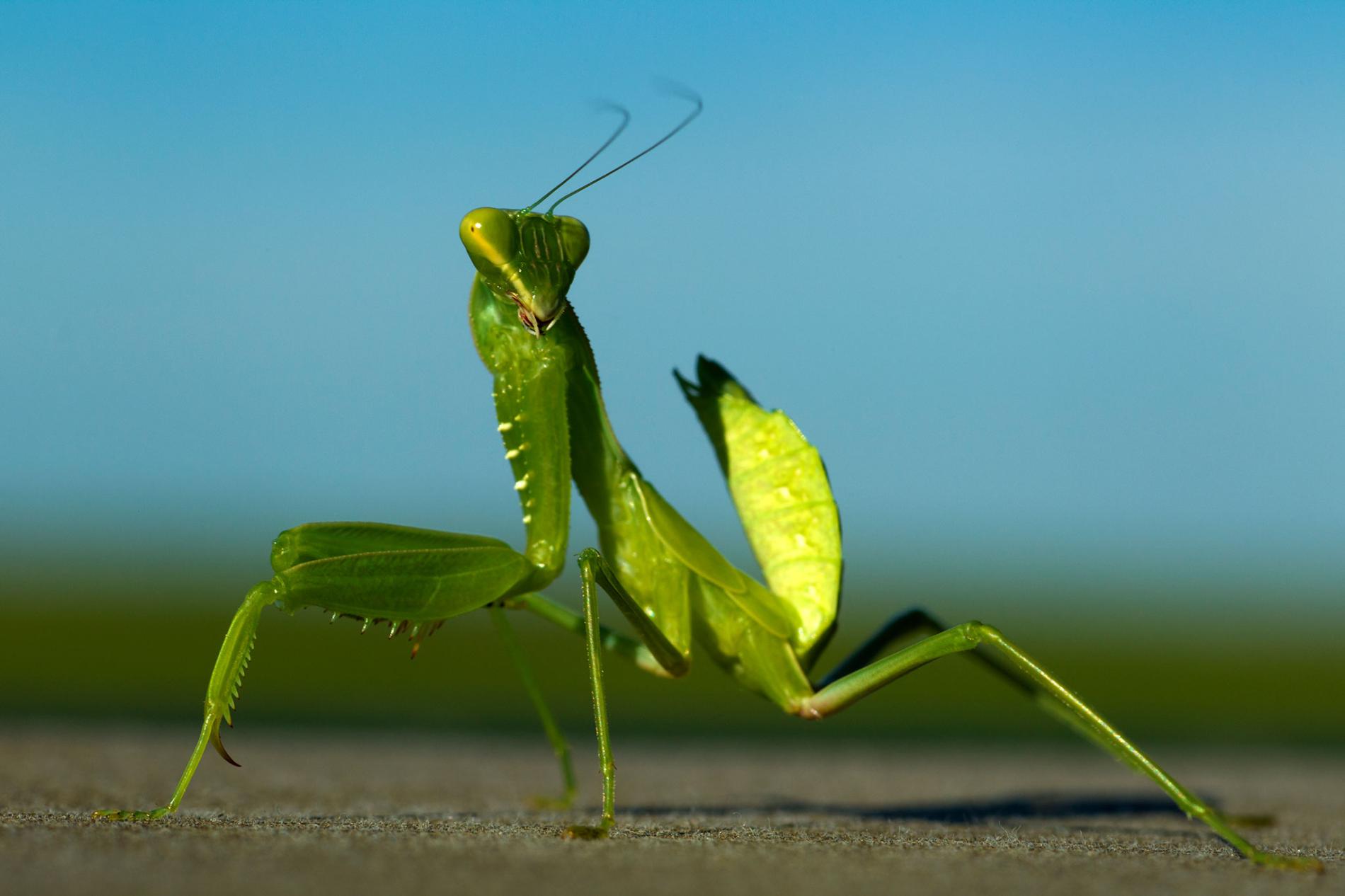
In the traditional kung fu in our country, there is a kind of boxing called mantis fist. As the name suggests, the essence of this style of boxing is to imitate the movements of a praying mantis.
Praying mantises are an impressive insect, and their biggest features are an inverted triangular head and a pair of death's sickle-like forefoots.
The forefoot is the main attack organ of the praying mantis, and most mantises have many small spines on the forefoot, which are used to limit the movement of prey when hunting.
Their forefoots for attack are significantly stronger than the middle and hind feet used for walking, although the three feet don't differ much in length.
Praying mantises are ambush predators, they do not follow the prey to engage in sneak attacks, but "wait for the rabbit" to wait for the prey to approach.
When an unsuspecting prey appears in range, the well-camouflaged praying mantis will quickly strike, subduing it with a few "mantis punches" and enjoying it.
Scientists are also fascinated by praying mantises, and through observations of the mantis hunting process in high-definition videos, they found that the mantis's fist technique is far more "superb" than people think.
"Punch Speed" is adjustable
As ambush predators, praying mantises have an amazing attack speed, they can complete an attack in tens of milliseconds at the fastest, and 1000 milliseconds is equal to one second.
Similar to praying mantises are frogs, but their weapons are long tongues that can be captured in a very short time when mosquitoes or flies, for example, come into view.
This sudden strike of the praying mantis and frog is very much like a catapult device, but they take one more step: they pull back the spring that has ejected.
The spring needs to be loaded with a fixed force to retract, from this point of view, the mantis or frog shot is basically mechanical, the speed is also fixed.
But the researchers' experiments proved that the attack of praying mantises is very flexible, and they can change their attack speed according to the speed at which their prey moves.
The experiment goes something like this, placing the praying mantis in a container with small holes, luring it to strike with different insects, and then filming the whole process with a high-definition camera.
The researchers played back the mantis's attack at a rate of 200 frames per second, and they found that the time it takes the mantis to complete an attack varies widely.
Some take 60 milliseconds, some take more than 3 times as long, and the longest one is 290 milliseconds, which mechanical springs can't do.
Pictured: The order in which the praying mantis punches
Can "close the punch" in the middle
In addition to adjustable attack speed, praying mantises have a surprising ability that they can pause during extremely fast attacks.
What does that mean? It is explained in two cases.
One is that when the praying mantis finds that it is shooting too fast, it will stop and correct its speed and capture the prey at a more appropriate speed, after all, the prey is moving.
The other is when the praying mantis interrupts its attack before catching its prey, because the prey is likely not easy to deal with, and it is not for safety reasons.
It is not a rare thing for humans to "keep people under the knife", because the whole process of use is not fast, and it is not easy to stop.
But the average attack time of the praying mantis is only a few microseconds, and it is inconceivable that it can make a very fast pause in a very short period of time.
Moreover, this "interruption of action" has never been found in other large insects, and may be a unique set of survival skills they have evolved.
The nervous system is more developed than expected
The order of limb movement of the praying mantis during the attack mainly includes four stages: approaching, attacking, capturing, and retracting, which is also the basic move of boxing.
Behind the "punch must be hit" is precise computing power, they can calculate the speed and trajectory of prey, so as to determine when and what angle they should attack.
Of course, this is not to say that praying mantises really understand physics and arithmetic, but that their nervous system can convert the visual information of their prey into a movement signal.
This motion signal can be simply understood as "intuition", as if you didn't calculate the trajectory of the ball when you received the ball but felt that it would fall there.
For humans, this "intuition" is not unusual, after all, the degree of development of the human brain is obvious to all, but for the praying mantis with a tiny head, it is very unusual for it to have such a developed nervous system.
At last
After understanding the superb "fist technique" of praying mantises, it is not difficult to understand why they can occupy the status of top predators, and the study of them has also made humans begin to re-examine creatures such as insects.
Insects have long been thought of as robots that follow simple rules, doing mechanical movements and living a mechanistic life, and there seems to be no place to circle.
But the study of praying mantises has broken people's "prejudices" against insects, and this inconspicuous "small robot" has its own more complex survival mechanism than large animals.
At the same time, it adds to the growing number of topics about insects, such as logically inferring what abilities from wasps to ants might have.